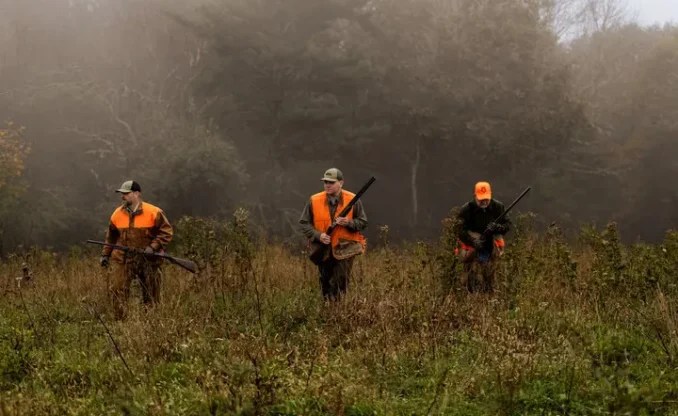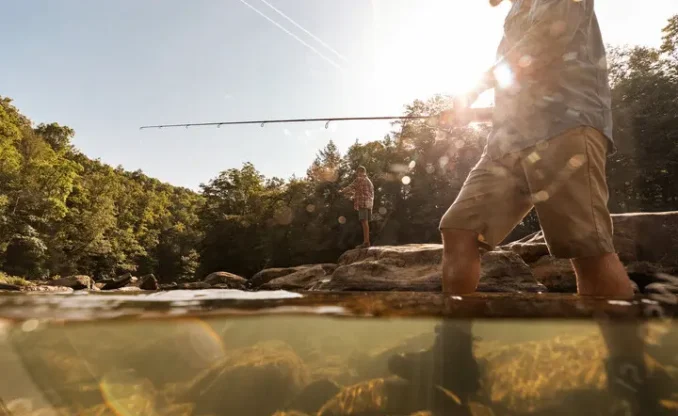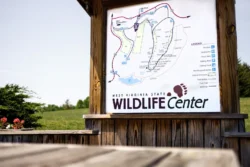Your guide to safe and fun boating adventures in Almost Heaven
Whether you’re planning a leisurely day on one of West Virginia’s serene lakes or an adventurous journey down a scenic river, basic boating safety practices can enrich your experience by providing you and your companions peace of mind as you navigate the waters. In this blog, we’ll cover essential tips for safe boating adventures on your favorite lakes and rivers, along with pointers for maintaining and ensuring the reliability of your boat.
Learn the Lake
West Virginia might be a landlocked state, but its large lakes and impoundments provide ample opportunities to enjoy some of the best boating adventures on the east coast. But to fully enjoy everything these waters have to offer without compromising safety, just follow these basic guidelines.
Observe posted speed limits and respect designated no-wake zones. Speed limits and no-wake zones are in place to create a safe and enjoyable environment for everyone on the lake. These regulations are in place not only to prevent accidents and injuries but also to maintain the tranquility of the lake surroundings. By controlling speed and wake, boaters can minimize disturbances to wildlife, preserve the shoreline and ensure that all lake-goers can fully appreciate the serene beauty of their surroundings without unnecessary disruptions.
Be aware of your surroundings. Keep a vigilant eye on other boats, watercraft and swimmers and know how to navigate around potential hazards, such as submerged rocks or trees. Even if yours is the only boat on the water, don’t let your guard down. Relaxation and safety go hand in hand, allowing you to unwind and savor the experience without ever letting your guard down.
Know when to anchor. Different lake conditions demand different approaches to anchoring to ensure your boat stays securely in place. For example, in sandy areas, a fluke anchor is often effective, whereas in rocky terrain, a grapnel anchor may be more suitable for secure hold. By understanding the nuances of anchoring techniques and choosing the right equipment for the job, you can confidently navigate West Virginia’s lakes, knowing your vessel is securely moored.

Read the River
West Virginia is blessed with thousands of miles of navigable rivers, perfect for boating and fishing adventures all across the state. While many safety practices for lakes apply to rivers as well, there are some unique challenges to be aware of. To fully enjoy river boating without compromising safety, just follow these basic guidelines.
Go with the flow. Not all rivers are made alike, so make sure you familiarize yourself with a river’s flow, current and potential hazards. By learning about the river’s behavior, you can anticipate challenges such as rapids or low-head dams and navigate around them safely. To learn more about river flow, visit WVdnr.gov/stream-gauges or waterdata.usgs.gov/wv/nwis/rt.
Chart your course. Navigating a river safely and successfully requires more than just following the current. With careful planning, you can know a river’s layout, including access points and any known hazards. By knowing the river’s twists and turns, as well as identifying eddies, currents and potential obstacles like rocks or strainers, you can plot a course that maximizes safety and enjoyment.
Share the river. Sharing the river with others is not only a matter of courtesy but a key aspect of boating safety. By giving priority to downstream vessels, you can prevent collisions and ensure a smooth flow of traffic. Additionally, being considerate of anglers, swimmers and other boaters by giving them plenty of space. Embracing a spirit of cooperation and respect allows all river-goers to enjoy their experience to the fullest.

Know your Boat
You can’t enjoy a day on the water if your boat isn’t ship-shape. So, let’s dive into a few safety practices focused on keeping your boat in proper working order.
Follow a maintenance schedule. Just like any other vehicle, boats require regular maintenance. By following a maintenance schedule, you can prevent wear and tear and address potential mechanical failures before they become serious issues. Regularly clean, inspect and service your boat, paying attention to critical components such as the engine and electrical systems. By staying proactive with maintenance, you can embark on your boating adventures with confidence, knowing your vessel is in peak condition.
Make sure safety equipment is accessible. Having necessary safety equipment readily accessible on your boat can be a lifesaver in emergencies. This includes making sure your boat is stocked with U.S. Coast Guard-approved life jackets for all passengers, as well as a fire extinguisher, flares, a first aid kit and a whistle or horn. Properly stow these items in designated locations, keeping them within arm’s reach of the helm for quick and easy access. By prioritizing safety equipment accessibility, you can respond effectively to any unforeseen situations that may arise during your boating excursions.
Visually inspect your boat before each trip. Before putting your boat in the water, make sure you conduct a thorough visual inspection to identify any potential issues that may compromise safety or performance. Check the engine, fuel system, electrical system and hull for any signs of damage, wear or malfunction. Look for leaks, loose connections or corrosion that may indicate underlying problems. By taking the time to visually inspect your boat before each trip, you can catch and address issues early, ensuring a smooth and trouble-free boating experience.

Sign up for a boater education class today
Safely navigating West Virginia’s lakes and rivers is just one important component of our boater education course, which you are required by state law to complete before you can legally operate a motor boat or personal watercraft on any water in West Virginia if you are born on or after Dec. 31, 1986.
Register for a free in-person class or complete one online through a state-approved vendor for a fee. To learn more, visit WVdnr.gov/boater-education.




